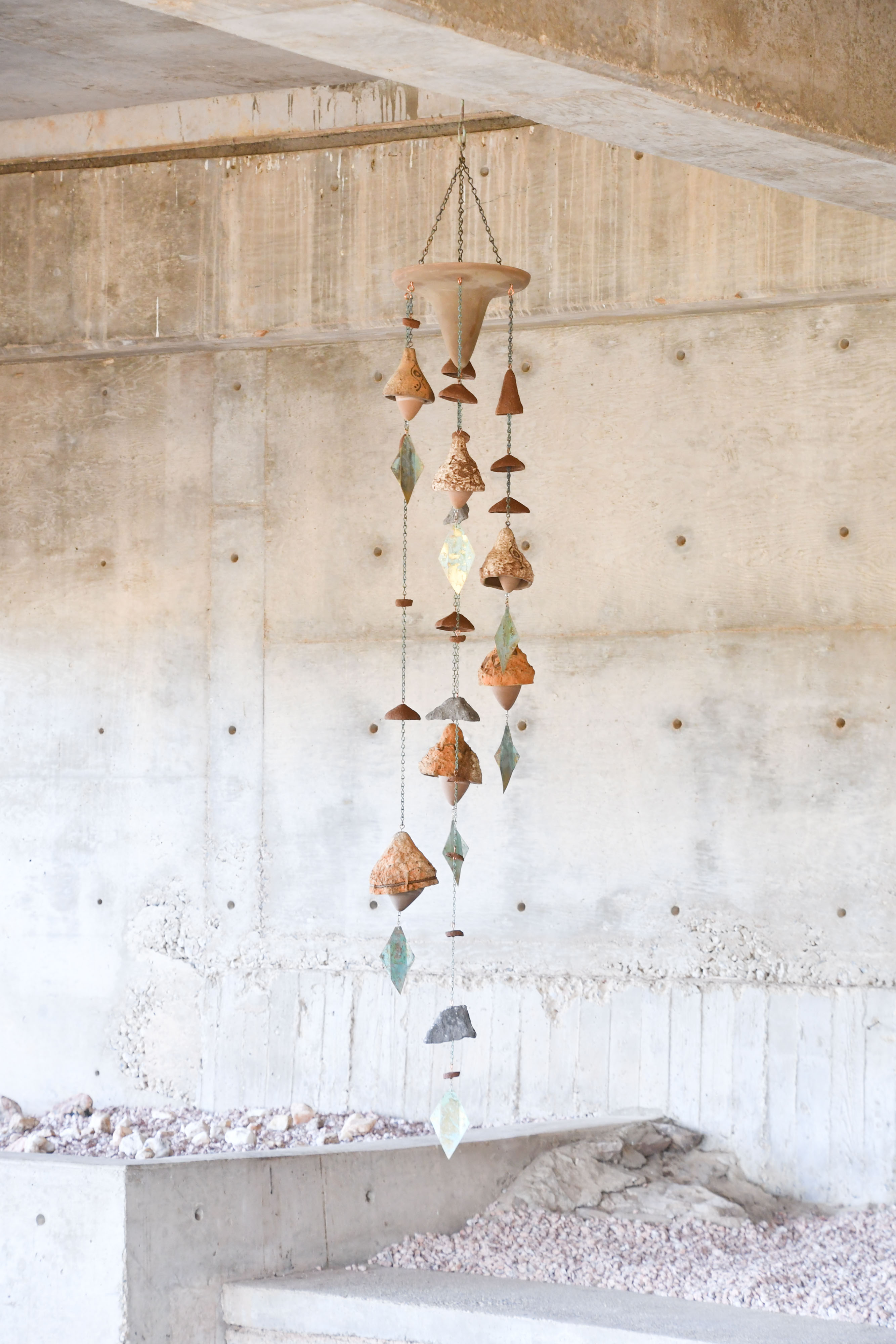Arcosanti Ceramics Studio
Six Bells, 2022


The art of Ceramics is one of our greatest historians; often the only evidence of peoples long since past are clay fragments, both decorative and utilitarian. Using clay to create vessels and objects seems intrinsic to the human experience. The materials are organic and abundant, the process is simple, and the products endure; in this way Ceramics is also one of our greatest common denominators, as nearly all cultures developed the art independently beginning as far back as 28,000 BCE in the Paleolithic era.
At Arcosanti, we make ceramics outdoors, which is an exercise in patience, intuition, and adaptation. We work to control the moisture content of the clay as much as possible, adjusting our process during the seasons to maintain production; clay dries much more quickly in the 100-degree heat of the high desert summer. We utilize all four elements as our materials and tools; in the silt-casting process, earth is both the medium and the method. The silt used in production is sourced from the Agua Fria riverbed that flows through Arcosanti and sits on Yavapai-Apache land.
For this piece, we conducted two experiments with different variables using the silt-casting process. The six bells hanging in a spiral were cast successively in the same mold, rather than reconstituting the silt after each pour. Each generation of bell grew larger as the earthen mold disintegrated, took on a more pronounced texture of silt, and, with increasing size, deepened in tone. The centerpieces are the product of our second experiment, documented through video by Ana Vazquez: on the Agua Fria riverbank, we did a small silt pour, sourcing all the materials hyper-locally. Dry river clay was mixed with river water for the slip, and into the silt of the riverbed, we impressed river rocks to create the molds.
At Arcosanti, we make ceramics outdoors, which is an exercise in patience, intuition, and adaptation. We work to control the moisture content of the clay as much as possible, adjusting our process during the seasons to maintain production; clay dries much more quickly in the 100-degree heat of the high desert summer. We utilize all four elements as our materials and tools; in the silt-casting process, earth is both the medium and the method. The silt used in production is sourced from the Agua Fria riverbed that flows through Arcosanti and sits on Yavapai-Apache land.
For this piece, we conducted two experiments with different variables using the silt-casting process. The six bells hanging in a spiral were cast successively in the same mold, rather than reconstituting the silt after each pour. Each generation of bell grew larger as the earthen mold disintegrated, took on a more pronounced texture of silt, and, with increasing size, deepened in tone. The centerpieces are the product of our second experiment, documented through video by Ana Vazquez: on the Agua Fria riverbank, we did a small silt pour, sourcing all the materials hyper-locally. Dry river clay was mixed with river water for the slip, and into the silt of the riverbed, we impressed river rocks to create the molds.

